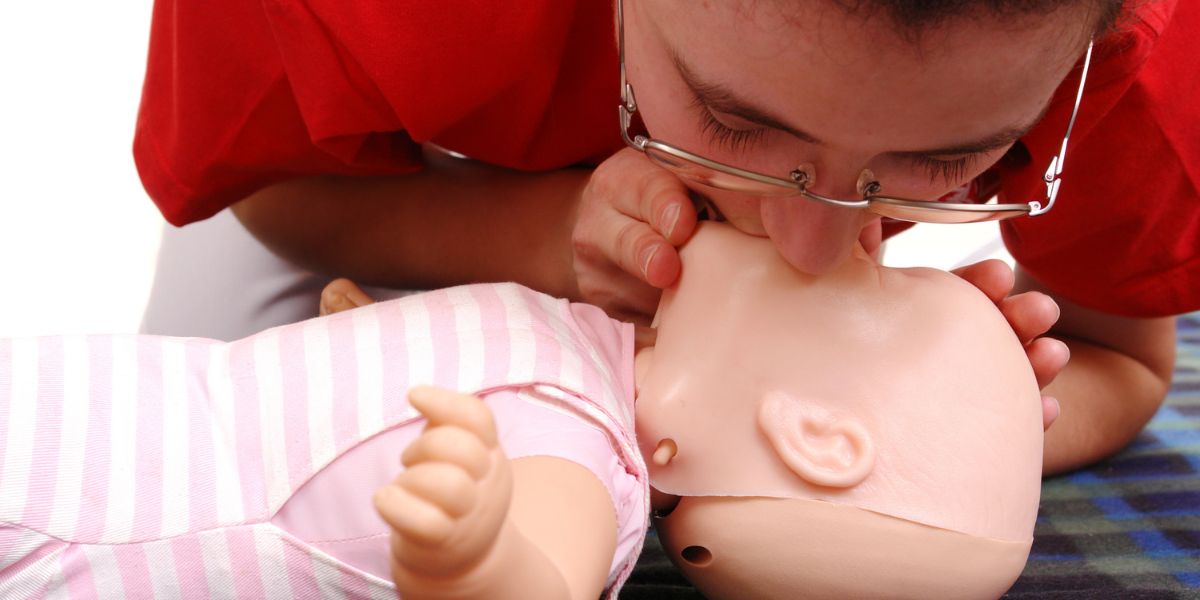
Would you know what to do?
If an accident occurred and your young child stopped breathing, would you be able to step in, stay calm and save their life?
Performing CPR on a young child or infant follows the same DRSABCD Action Plan as adult CPR but with a few key differences. If it has been some time since you last completed CPR training, it is recommended to review these steps first to ensure you can respond confidently and effectively in an emergency.
What’s different?
The table below outlines the key differences between CPR for adults, children (aged 1–8 years), and infants (under 1 year):
| Infants | Children | Adults | |
|---|---|---|---|
| Head tilt | Neutral position | Full tilt | Full tilt |
| Compression hand placement | 2 fingers centre of chest (just below nipple line) | 1-2 hands centre of chest | 2 hands centre of chest |
| Compression rate | 30 compressions : 2 breaths | ||
| Compressions per minute | 100-120 BPM | ||
| Compression depth | 1/3 of chest depth | ||
| Rescue breaths | Puff over nose and mouth | Small breath mouth-to-mouth | Full breath mouth-to-mouth |
| Defibrillator (AED) pad placement | Anterior-posterior placement of paediatric pads (one pad on the chest and one on the back) | Standard placement of paediatric pads or anterior-posterior placement of adult pad (ensuring they do not touch) | Standard placement of adult pads |
If using an AED on a child under 8, use paediatric pads and settings if available.
Learn more with the Heart Beat Club
Want to feel more confident handling common first aid situations involving infants and children? The Heart Beat Club is a community education program designed especially for parents, family members and carers for young children.
Enrol in a Heart Beat Club session at the link below and prepare for the moments that matter.

